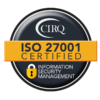I was able to attend a Macular Degeneration event yesterday in Charlottesville, VA. It was one of several put on by the Macular Degeneration Association across the country, a non-profit that helps raise awareness of the condition and work towards a cure. Their medical director, Dr. Joshua Mali, an ophthalmologist, spoke about Aged- Related Macular Degeneration (AMD), and I want to pass on some of his remarks, and other information I have learned.
Age-Related Macular Degeneration is not rare – it affects about 15 million people in the US and is a major cause of vision loss for those over 60.
What is AMD? Remember the retina? That is the layer in the back of the eye that receives the light that is converted into what we see. So, you don’t want anything bad to happen to it! The Macula is center portion of the retina. So Macular Degeneration is when this Macula portion of the retina has a breakdown, and you can lose the ability to see fine details clearly. While it generally doesn’t cause total blindness, it can significantly affect your vision, and you can lose your central vision. Your central vision is the most important part of your vision – it is what you use to read, drive, see pictures and faces.
There are two types of AMD: Wet AMD and Dry AMD.
Dry AMD is the most common and is not as serious as Wet AMD. But Dry AMD can progress to Wet AMD in about 10% of the cases. Dry AMD is when small bumps, called drusen, accumulate in the macula. This causes a slow, gradual deterioration of vision.
Wet AMD is less common, but more devastating, and can lead to rapid vision loss. This is when there is abnormal blood vessel growth beneath the retina that can leak blood. This causes visual distortion – straight lines can look wavy, and there can be blind spots. The bleeding forms a scar and permanently damage the retina.
We’ve heard from patients who have Wet AMD in one eye and Dry AMD in the other!
Risk factors for AMD include heredity, so if your parents or other relatives had AMD, you have a greater risk of developing it. Other risks include high blood pressure, high cholesterol, and being fair skinned. But one you can absolutely control is smoking – you need to quit; smoking can be blinding you!
Symptoms of AMD include blurred vision, difficulty reading fine print; dark, blurry areas in the center of your vision, and changed color perception.
While there is no cure for AMD, the good news is that there are treatments. We know because we get more and more requests for AMD patients to do surveys!
For Dry AMD, there is vitamin therapy, home monitoring, and regular eye exams.
For Wet AMD, there are medications called anti-VEGF injections) that block the development of new blood vessels. These are injections in the eye – but from what I’ve heard from patients, it is not nearly as bad as it sounds! Some patients have regained vision that was lost. There is also laser therapy.
And there are many special devices that produced enlarged images of objects, pictures, and text.
The key is to watch out for any vision symptoms and see your eye doctor! Early treatment is key.







